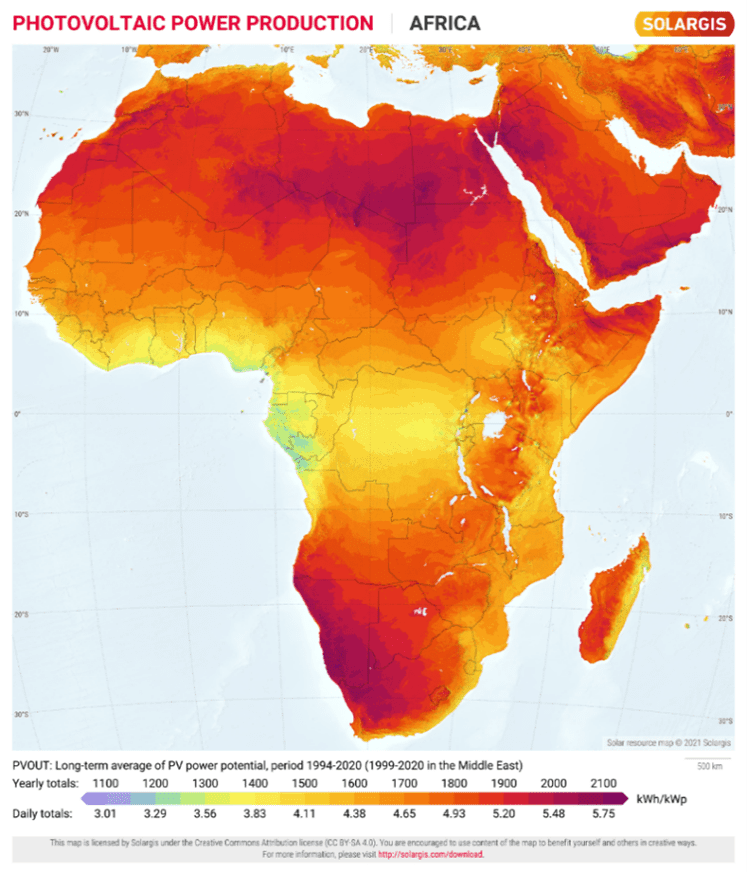The International Energy Agency (IEA) estimates in its latest report that 80% of the global population without access to energy, is based out of Africa, with around 600 million people affected, especially in the Sub-Saharan region. However, preliminary data suggests that the number of people without energy access in Africa may flatten in 2023 after increasing for three years, and there must be steady and consistent efforts to scale up energy accessibility in the years to come.
As a part of our long-term commitment to improve energy accessibility, Schneider Electric started a program in 2009 called – Access to Energy (A2E). This program aims to support various stakeholders around the world with training and technical expertise, to deal with issues regarding lack of energy accessibility. Through this program, Schneider Electric funded a research, that was led by PhD scholars Emilie Etienne and Théo Chamarande. The team visited several rural sites within African countries, to delve deeper into the role of solar microgrids in improving energy accessibility, the common roadblocks in the process, and ways to solve them.
What is a Microgrid?
Microgrids are stand-alone power systems that can operate independently from the main power grid. They are usually based on renewable energy sources such as solar, wind, or hydroelectricity. These microgrids can be deployed locally and provide clean, reliable power to communities.
In most cases, electricity generated by a microgrid is cheaper per kilowatt-hour than usual sources used in rural areas – such as fossil fuel-enabled devices.
Why solar microgrids are a great solution to remedy the energy crisis in Africa
Africa is often called the ‘sun continent’ as it receives more total hours of bright sunshine than any other continent. This increases the possibility of harnessing solar power to solve its energy crisis.

Source: Solargis
Solar microgrids are cheaper and greener than diesel generators and are suitable for most geographical conditions. However, like every other solution, Microgrids have their own share of challenges. Here are three key challenges that jeopardize most microgrids installed in rural Africa and ways to solve them.
Challenges with rural Microgrids and potential solutions
Challenge #1 – Affordability of monitoring remote areas
Operating microgrids can be costly, especially when monitoring those installed in remote areas. Rural microgrids often face geographical challenges, such as inaccessibility during rainy seasons, distance from city centers, and being on islands. This makes it difficult and costly to conduct on-site visits to monitor the infrastructure. However, recent advancements in microgrids have led to the incorporation of digital tools, which enable remote monitoring by providing timely and detailed information. These tools are crucial for better understanding and analyzing the evolution of demand. They also help mitigate the risk of data loss, which is higher when manually recording years of data.
Advanced digital IoT-enabled software enhances site visibility and adds value to the remote monitoring process. This includes:
- real-time monitoring
- analyze and improve operational efficiency
- sending data to the cloud and monitoring at a global level
- assess impact parameters and performance parameters for better decision-making
Challenge #2 – High attrition among local managers
People on the ground play a pivotal role in the success of a microgrid ecosystem. They handle technical tasks, collect payments, facilitate communication between customers and operators, detect fraud, manage conflicts, and alert the operator when maintenance is needed. However, a significant issue is the high turnover rate among these managers. This is not their fault, as the uncertainty of microgrids often leads them to take up other jobs in cities or do something that assures a more stable income.
To address this problem, it is important to involve these managers more closely in operations, provide them with vocational training, and ensure a stable source of income. Service providers should work closely with them, empower them through training, and ensure they have a stable income.
Challenge #3 – Fluctuating incomes and electricity needs of rural customers
The rural population has several sources of income and expenses that fluctuate throughout the year. This includes – daily jobs, small-scale agriculture, occasional remittances, and more. As a result, their ability to pay for electricity services varies greatly.
Similarly, their electricity needs also vary. Some days may require more electricity due to community events or market days, while some months may experience a peak or a decrease in electricity demand due to harvest periods or weather conditions.
Contrary to this, some microgrids require customers to pay a fixed amount every month, regardless of energy needs and income. This can make it inaccessible for many people. This is where a Pay-as-you-Go or a prepaid service model can help.
A Pay-as-you-Go model allows customers to pay for electricity based on their needs and income. It breaks down the total cost into monthly or weekly payments, reducing the upfront cost of the solar home system. This provides much-needed flexibility for rural customers.
On the other hand, a prepaid model enables customers to pay a small amount to the service provider for a set amount of consumption, either for a day or a month. This allows people in rural areas to choose convenient plans based on their usage without the burden of a fixed cost.
The key to success – a robust regulatory framework
Some of the major challenges in running these microgrids, such as the ones listed above, usually stem from the lack of trust among stakeholders. To successfully run a network of microgrids in a complex scenario, there must be a strong regulatory framework set up by local authorities. That will help build trust among investors, developers, and customers.
A national integrated energy plan led by local authorities and jointly designed by key stakeholders will help in instilling accountability. This, in turn, will lead to a successful ecosystem of operational microgrids.
The way forward
As an impact company on a mission to connect 50 million people to clean and reliable sources of energy, by 2025, Schneider Electric’s A2E program is addressing these challenges, by:
- Developing quality and affordable products and services
- Preparing electricians and entrepreneurs within rural areas
- Making the most of Schneider Electric’s expertise in the digital and sustainability space
- Financing start-ups in the field of access to energy
- Actively contributing to the A2E international community, sharing experience with all stakeholders.
Find out more about Schneider Electric’s efforts to tackle these challenges, from the links below:
- Access to Energy: Learn more about this program by Schneider Electric that is committed to the cause of energy accessibility. Check out our innovative products specially customized for communities that lack access to energy.
- Youth Education & Entrepreneurship program: Discover how Schneider Electric is empowering young minds through education and entrepreneurship initiatives.
- EcoStruxure IoT platform: Dive into the world of EcoStruxure, Schneider Electric’s innovative IoT platform, and explore how it is revolutionizing energy management and automation.


Conversation
This type of research and initiative is so important, as it funnels creativity into what I think is an overlooked aspect of the energy paradigm – access.
For the world to make great leaps in sustainability and progress, I believe it’s paramount that we include and empower a significant magnitude of people who have had to become experts in getting by with less.